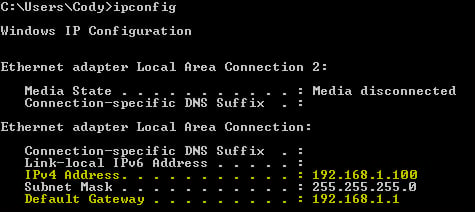Where's the fun in running your own Minecraft server when no one else can log into it? I will now explain how to allow your friends to connect to your server so that they can play with you. In order to do this, we must first find your IP address. Much like your place of residence has a street address, your computer has an address on the Internet. This is what your friends will type into their Minecraft client to find your server. To find this, simply search IP on Google. At the top of the results will be a line that states: Your public IP address is XX.XX.XXX.XX (the Xs will be replaced with numbers and its overall length may be different). You can also visit www.whatismyip.com to find your IP address.
Once you have your IP address, try using it to connect to your server rather than using localhost. If you are able to connect, then your friends will be able to, too. If not, you will have to take additional steps to allow other players to connect to your server. This will be the case if your computer is attached to a router. We must let the router know to point other Minecraft players towards your computer that is running the server. This process is called port forwarding and to do so, we will first need some additional information.
We need to know the IP address of your computer on your local network. This IP will be different from the address we obtained earlier. We will also need to know the IP of your router. To find these, we will open up a new command prompt window. The command prompt can be found at:
Start Menu/All Programs/Accessories/Command Prompt
You can also search cmd.exe to find it. Once the command prompt is open, type:
# ipconfig
Then, press Enter. A screen will be displayed similar to the one in the following screenshot:

In the previous image I have highlighted the two IP addresses that you are looking for. The numbers will most likely be very similar to these sample numbers. IPv4 Address is the address of your computer, and Default Gateway is the address of your router. Take note of both of these IPs.
Next, we will log into your router. In any web browser, type the IP address of the router (192.168.1.100 in our example). If you did this correctly, then you will be prompted with a login form asking for a username and password. If you do not know this information, you can try admin for both. If that is unsuccessful, you will have to find the default username and password, which can be found in the paperwork that was provided with your router. This information can usually be found online as well, by searching the name of your router along with the terms default login.
Once we are logged into the router, we must find the area that includes the settings for port forwarding. There exist many brands and models of routers in the world and all of them present this option differently, so I cannot provide a specific walkthrough of how this page is found. However, you will want to look for a tab that says something along the lines: Forwarding, Port Forward, or Applications & Gaming. If you do not see any of these, then expand your search by exploring the advanced settings. Once you find the correct page, you will most likely see a table that looks like the following one:
|
Application Name |
External Port |
Internal Port |
Protocol |
IP Address |
|---|---|---|---|---|
|
Bukkit Server |
25565 |
25565 |
TCP and UDP |
192.168.1.100 |
Fill in the fields as it is shown in the previous table. Of course, the layout and formatting will differ depending on your router, but the important details are that you forward port 25565 to the IP address that you found earlier (192.168.1.100 in our example). Be sure to save these new settings. If you have done this correctly, then you should now be able to connect to your server using your public IP address.



